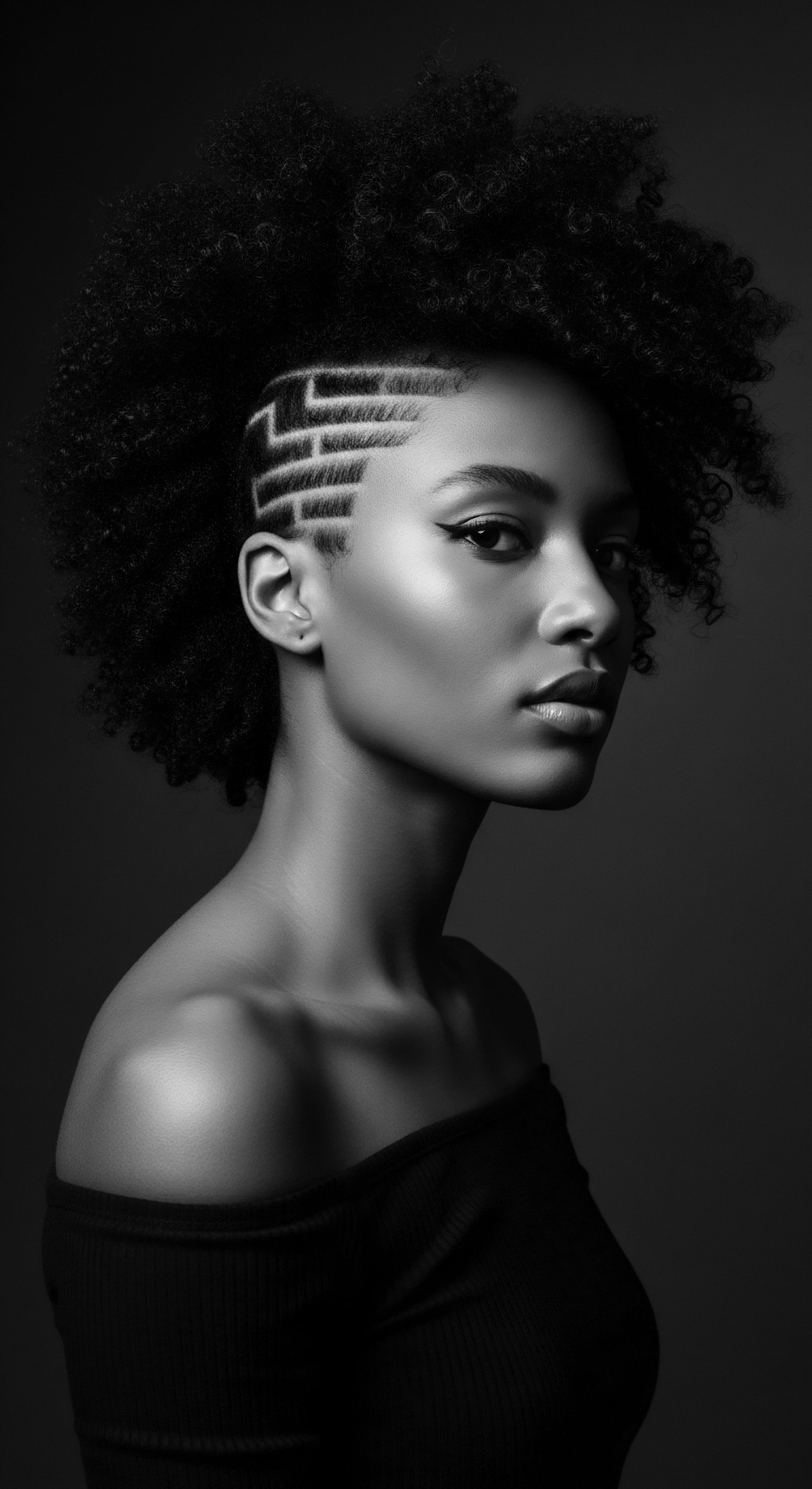
Roots
The very essence of textured hair protection, as understood through generations, whispers a story older than written records. It speaks of ancestral wisdom, carried not just in memory but within the very fibers of our being. Can modern science validate historical textured hair protection? This inquiry extends beyond mere academic curiosity; it asks if the meticulous care rituals, the traditional adornments, and the communal practices of our forebears hold tangible, verifiable benefits beyond their profound cultural significance.
For those whose ancestry traces through the vibrant tapestries of Africa and its diaspora, hair has always been a language, a symbol of identity, status, and spirit. It is a living archive. When we ask if science can affirm these age-old practices, we are asking if the meticulous attention given to coils and curls across centuries aligns with today’s understanding of trichology and dermatology.
Our journey through this question requires us to gaze upon textured hair not merely as a biological structure but as a profound repository of human ingenuity and resilience. The earliest communities understood environmental stressors—harsh sun, dry winds, abrasive dust—and fashioned defenses from their surroundings. Their knowledge, passed down through touch and oral tradition, formed a living pharmacopeia and a manual of care. This shared wisdom, often dismissing as anecdotal, now awaits the discerning lens of contemporary research, ready to reveal the deeper truths of heritage-informed care.
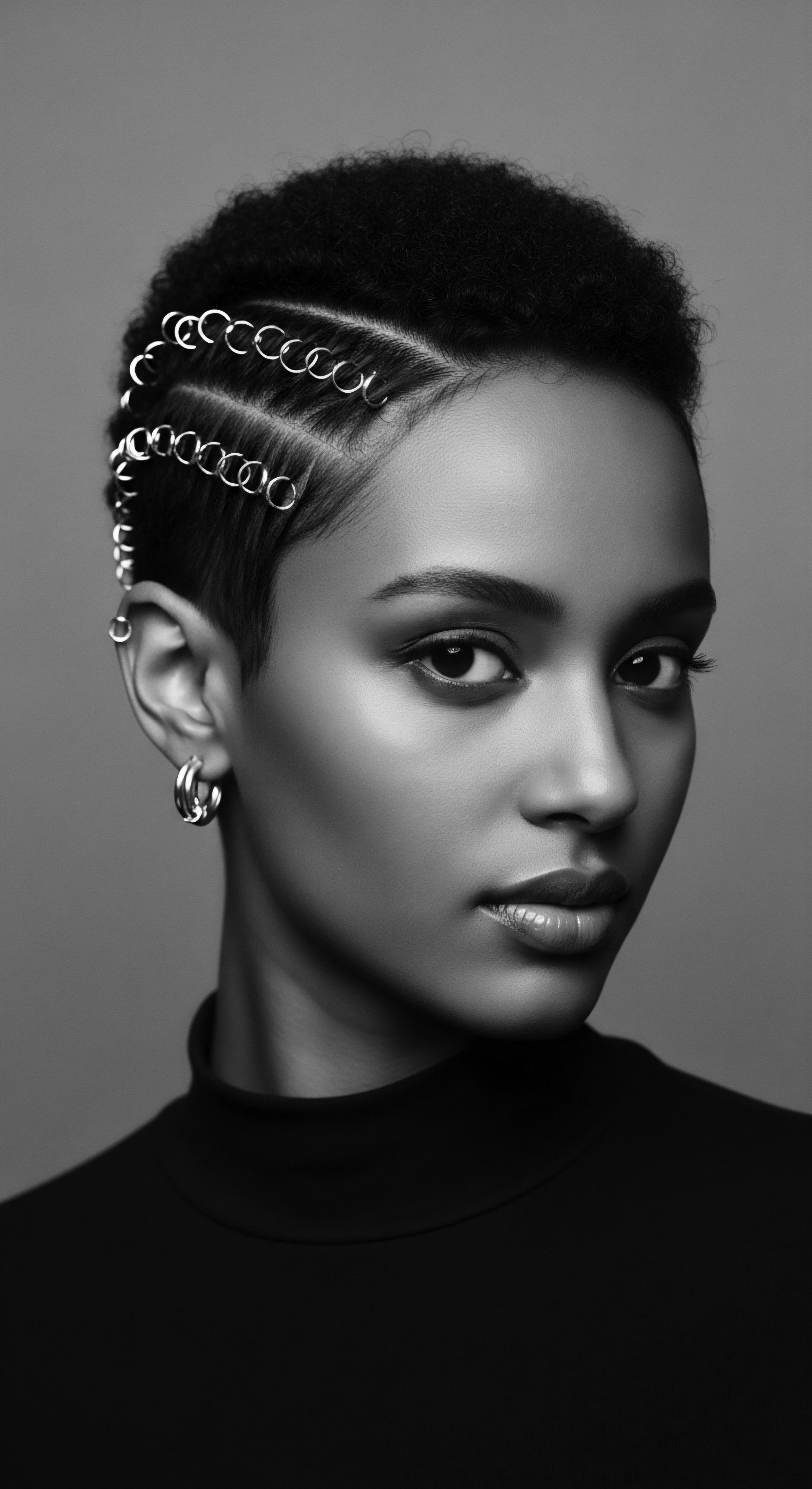
Hair Anatomy and the Ancestral View
Textured hair possesses a unique architectural design. Unlike straight hair, which generally emerges from round follicles, coily and kinky hair arises from more oval or elliptical-shaped follicles. This follicular shape dictates how the hair strand twists and coils as it grows, creating points along the shaft that can be more susceptible to breakage. (Welsing-Kitcher, 2021).
The natural oils produced by the scalp, known as sebum, also face a greater challenge traveling down these spiraling strands, contributing to the common experience of dryness for textured hair types. (Noma Sana, 2025). Ancestral communities, long before the advent of microscopes or molecular biology, seemingly possessed an intuitive grasp of these vulnerabilities. Their protective measures, like coating hair with butters or clays, directly addressed the need for moisture retention and environmental shielding.
Ancestral hair wisdom, though unwritten, spoke to the very structural needs of textured hair, anticipating modern scientific findings on moisture retention and environmental shielding.
The very composition of hair, primarily keratin protein, forms its strength and flexibility. Environmental factors, such as UV radiation and pollution, can degrade this protein, leading to increased porosity, brittleness, and a loss of structural integrity. (MDPI, 2022). Ancient solutions, therefore, often centered on fortifying the hair and scalp against these external aggressors.
For instance, the Himba people of Namibia have long applied a mixture known as Otjize, a blend of butterfat and red ochre pigment, to their skin and hair. This centuries-old practice is not merely an aesthetic choice. A 2022 scientific study confirmed that red ochre exhibits exceptional UV filtration and significant IR reflectivity, substantiating its effectiveness as a sunblock. (Himba, 2022; Wikipedia, 2022).
This case stands as powerful evidence ❉ a historical practice, born from intimate knowledge of a harsh desert climate, finds a direct validation in modern scientific analysis. The Himba knew, without laboratories, that this earthy preparation provided protection.

Textured Hair Classification and Cultural Understandings
Modern hair classification systems, such as those categorizing hair from Type 1 (straight) to Type 4 (coily), offer a framework for scientific study. Yet, these systems, while useful for product development, often overshadow the richer, more nuanced classifications inherent in cultural traditions. Historically, hair texture, style, and adornment conveyed messages of identity, marital status, age, religion, ethnic affiliation, and even wealth. (Afriklens, 2024; Wikipedia, 2024).
The intricate braiding patterns of West African societies, such as the Yoruba, Wolof, and Fulani, held profound spiritual and social meanings, a complex lexicon of hair. (Afriklens, 2024). These classifications were not about curl pattern numbers but about community, lineage, and spiritual connection.
- Yoruba Irun Kiko ❉ A form of thread-wrapping style, signifying femininity and rites of passage.
- Himba Erembe ❉ Headdresses indicating new mothers and married women, fashioned from goat hair and butterfat.
- Fulani Braids ❉ Styles often adorned with beads, cowrie shells, and silver coins, reflecting social status and age. (Livara, 2023)
The imposition of Eurocentric beauty norms during the transatlantic slave trade sought to erase these deeply rooted hair identities. Enslaved Africans often had their heads involuntarily shaved, a dehumanizing act severing a vital connection to home and heritage. (Byrd and Tharps, as cited in Wikipedia, 2024). Despite this, hair practices persisted as a quiet, powerful act of resistance and cultural preservation.
Cornrows, for example, served as covert maps for escape in some regions of the diaspora, braiding information into their very design. (Afriklens, 2024). The science of hair resilience here meets the science of human endurance.

Hair Growth Cycles and Historical Factors
Hair grows in cycles ❉ anagen (active growth), catagen (transitional), and telogen (resting). Genetics, overall health, and environmental factors influence these cycles. (Hairdressing Live, 2024). Historically, dietary practices, access to clean water, and environmental conditions played a significant role in hair health.
Ancestral communities relied on natural resources for nourishment, both internally and externally. The application of plant-based oils and butters, as seen with shea butter in West Africa, provided external sustenance. (Healthline, 2018). These natural remedies, rich in vitamins and fatty acids, contributed to scalp health and moisture retention, creating an optimal environment for hair growth and minimizing factors that could prematurely interrupt the growth cycle.
(Wellnesse, 2024; Dr. Axe, 2022).
| Ancestral Ingredient/Practice Shea Butter (West Africa) |
| Modern Scientific Relevance Rich in fatty acids (oleic, stearic, linoleic), vitamins A and E. Acts as an occlusive barrier, preventing moisture loss, reducing inflammation, and offering some UV protection. (Healthline, 2018; Dr. Axe, 2022). |
| Ancestral Ingredient/Practice Red Ochre/Clay (Himba people) |
| Modern Scientific Relevance Contains ferrous oxide, proven to filter UV radiation and reflect infrared, providing physical sunblock properties. (Himba, 2022; Wikipedia, 2022). |
| Ancestral Ingredient/Practice Coconut Oil (Various African/Asian cultures) |
| Modern Scientific Relevance Known to penetrate the hair shaft, reducing protein loss and providing deep conditioning, supporting overall hair strength. (Ayurvedic Tradition, 2023). |
| Ancestral Ingredient/Practice Braiding/Threading (Across Africa/Diaspora) |
| Modern Scientific Relevance Minimizes manipulation, reduces breakage points, protects ends from environmental damage, and helps retain length by reducing shedding. (Davines, 2023; Whiz Laboratories Skincare, 2023). |
| Ancestral Ingredient/Practice Ancestral applications often mirrored scientific principles of protection, moisture, and fortification, long before chemistry explained them. |
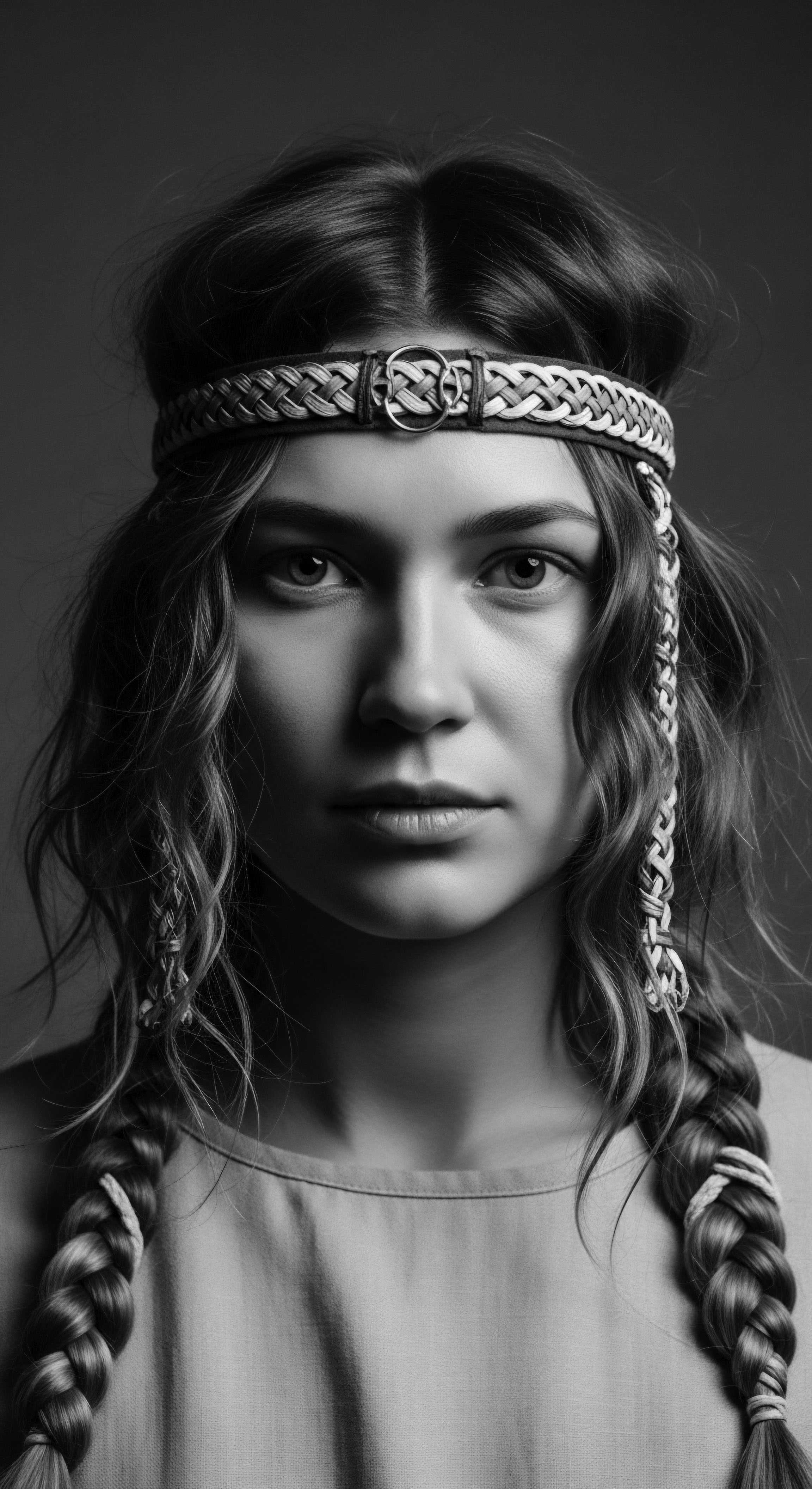
Ritual
The ritualistic care of textured hair, stretching back through millennia, embodies a profound connection between self, community, and the rhythms of nature. Styling was never a superficial act; it was a deeply imbued expression of belonging, protection, and communication. Can modern science validate historical textured hair protection in the realm of styling? This question invites us to consider how the intricate patterns, the mindful manipulation, and the communal gatherings around hair preparation served not only cultural purposes but also provided tangible, physical defense for delicate coils and curls.
From the careful sectioning for cornrows to the deliberate coiling of Bantu knots, each technique aimed to minimize damage, promote length retention, and shield the hair from environmental assaults. Modern trichology, with its understanding of mechanical stress and environmental degradation, now offers a scientific vocabulary to describe the enduring efficacy of these age-old styling traditions.
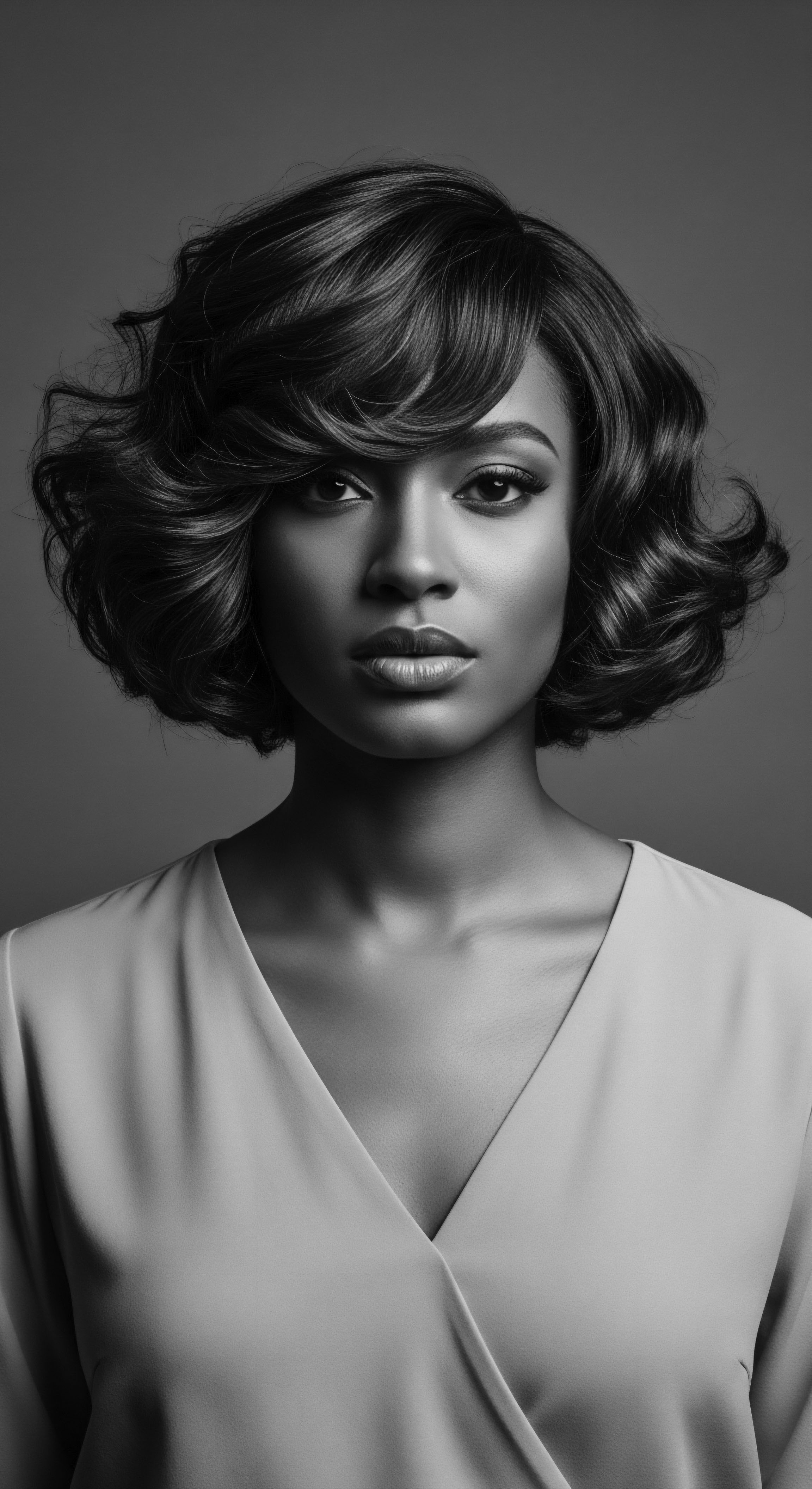
Protective Styling as an Ancestral Shield
Protective styles, a term now commonplace in natural hair circles, describe hairstyles that minimize manipulation and exposure to external elements. This practice, dating back over 3,000 years to ancient Egypt, where archaeologists discovered a woman buried with 70 weave extensions, shows a historical precedence for hair protection. (Davines, 2023). The science behind these styles acknowledges that curly hair, despite its strength, remains vulnerable at the curve of the coil and at the ends, making it prone to tangles, knots, and breakage.
(Davines, 2023). Protective styles tuck away these vulnerable ends, limiting exposure to humidity, heat, and physical handling. (Davines, 2023).
Consider Cornrows, also known as canerows, with origins in various West African societies. (Afriklens, 2024). Beyond their practical function of keeping hair neat, cornrows during the transatlantic slave trade became a sophisticated means of coded communication, braiding escape routes into their designs. (Afriklens, 2024).
From a scientific perspective, the tight, flat braids lay close to the scalp, securing the hair shaft and minimizing friction against clothing or other surfaces. This reduction in physical manipulation translates directly into decreased breakage, a key aim of modern protective styling. (L’Oréal Paris, 2024).
Another foundational protective technique is hair Threading, a common traditional style in many African societies, particularly native to the Yoruba people of Southwestern Nigeria since the 15th century. (Livara, 2023). This method, which involves wrapping strands with thread, effectively elongates the hair and protects it, contributing to length retention. Modern science recognizes how such wrapping techniques can mechanically support the hair strand, preventing overstretching and reducing the incidence of breakage that can occur from daily handling or environmental factors.
The intricate geometry of traditional protective styles, like cornrows and threaded hair, offers clear mechanical advantages against breakage, a wisdom confirmed by contemporary hair science.

Traditional Tools and Their Protective Function
The tools employed in historical hair care reveal another layer of ancestral knowledge concerning protection. The Afro Comb, with archaeological finds dating back 7,000 years in ancient Kush and Kemet (modern-day Sudan and Egypt), stands as a testament to this understanding. These early combs, often made of bone or ivory, were not mere grooming items; they were imbued with cultural and spiritual significance, sometimes engraved with symbols of tribal identity, rank, or even protection. (Africa Rebirth, 2022).
The wide, often sparse teeth of the traditional Afro comb contrast sharply with the fine-toothed combs of other cultures. This design, inherently gentle, minimized pulling and snagging on textured hair, which is particularly prone to breakage due to its coiled structure. (Noma Sana, 2025). Modern science now advocates for wide-tooth combs and specialized detangling brushes for textured hair to reduce mechanical damage, mirroring the design principles seen in these ancient tools.
(Noma Sana, 2025). The foresight of our ancestors in crafting tools that respected the unique fragility of textured hair speaks volumes.

Transformations and Environmental Adaptation
Historical hair styling also served as a means of adapting to diverse environments. In hot, arid climates, styles that gathered hair, like updos or tightly braided patterns, helped to keep the neck cool and protected the entire hair mass from intense sun exposure. Conversely, in colder environments, fuller styles or head coverings offered insulation.
The Himba’s otjize, applied not only for UV protection but also to cleanse the skin in water-scarce conditions, speaks to this adaptability, where a single preparation served multiple protective and hygienic functions. (Wikipedia, 2023; Pure Love Artisan Sk, 2024).
- Physical Manipulation Reduction ❉ Braids, twists, and locs minimize daily combing and handling, reducing mechanical stress that can lead to breakage. (Davines, 2023).
- Environmental Shielding ❉ Styles that tuck away ends or involve head coverings guard against sun, wind, and pollution, which can degrade hair proteins. (Wikipedia, 2024).
- Moisture Preservation ❉ Enclosed styles help retain natural scalp oils and applied products, combating the inherent dryness of textured hair. (Davines, 2023).
The evolution of styling, from ancient Egyptian wigs for sun protection (Livara, 2023) to headwraps worn by enslaved African American women to shield hair from harsh labor conditions (Hype Hair, 2023), consistently points to a primary objective ❉ protection. Modern scientific understanding of environmental stressors—UV radiation damaging melanin and proteins, pollution accumulating on hair fibers, leading to oxidative damage—underscores the wisdom of these historical solutions. (NYSCC, 2021; MDPI, 2022). The continuity between historical styling practices and scientifically validated protective principles reveals an enduring human drive to care for and preserve what is sacred.

Relay
The deep echoes of ancestral wisdom concerning hair care continue to reverberate, informing our understanding of textured hair health with a profound sense of continuity. Can modern science validate historical textured hair protection in the intimate details of daily regimen and holistic wellbeing? This inquiry compels us to look beyond superficial correlations, seeking the precise biochemical and physiological explanations that bridge the knowledge passed down through generations with the insights gleaned from contemporary research. It is here, in the subtle dance between ancient remedies and molecular mechanisms, that the enduring authority of textured hair heritage truly comes to light.
The care of coils and curls, particularly in Black and mixed-race communities, has always been a holistic endeavor, recognizing the interconnectedness of body, spirit, and environment. From the selective application of natural butters to the deliberate creation of nighttime sanctuaries for hair, these practices were not random acts but carefully observed interventions designed to preserve and strengthen. Modern science now provides the lexicon to articulate why these time-honored approaches offer potent protection, often aligning with concepts like barrier function, oxidative stress reduction, and protein integrity.

Building Regimens ❉ Ancestral Wisdom and Contemporary Insights
Personalized hair regimens, a popular concept today, find their origins in bespoke ancestral practices. Communities across Africa and its diaspora utilized a diverse range of indigenous botanicals and animal fats, adapting their usage based on local availability, specific hair needs, and generational knowledge. For example, shea butter, extracted from the nuts of the Vitellaria paradoxa tree native to West Africa, has been used for thousands of years as a moisturizer, skin balm, and in hair care.
(Healthline, 2018; Dr. Axe, 2022).
Modern scientific analysis reveals that shea butter is rich in fatty acids, including oleic, stearic, and linoleic acids, along with vitamins A and E. These components act as emollients and occlusives, forming a protective barrier on the hair shaft that significantly reduces water loss, addressing the inherent dryness often seen in textured hair. (Healthline, 2018; Dr. Axe, 2022).
A study on a cream containing 5 percent shea butter showed moisturizing effects for up to 8 hours. (Healthline, 2018). Its anti-inflammatory properties, attributed to compounds like amyrin, also explain its historical use for soothing scalp irritation, an observation now supported by research. (Healthline, 2018).
This historical reliance on natural oils and butters for hair moisture and protection is scientifically sound. Textured hair, particularly coily and kinky types, often faces challenges with sebum distribution, making it more prone to dryness. (Noma Sana, 2025). The fatty acids in traditional butters help supplement this, providing essential lipids that coat the cuticle, reduce friction, and create a hydrophobic layer that repels water and environmental aggressors.
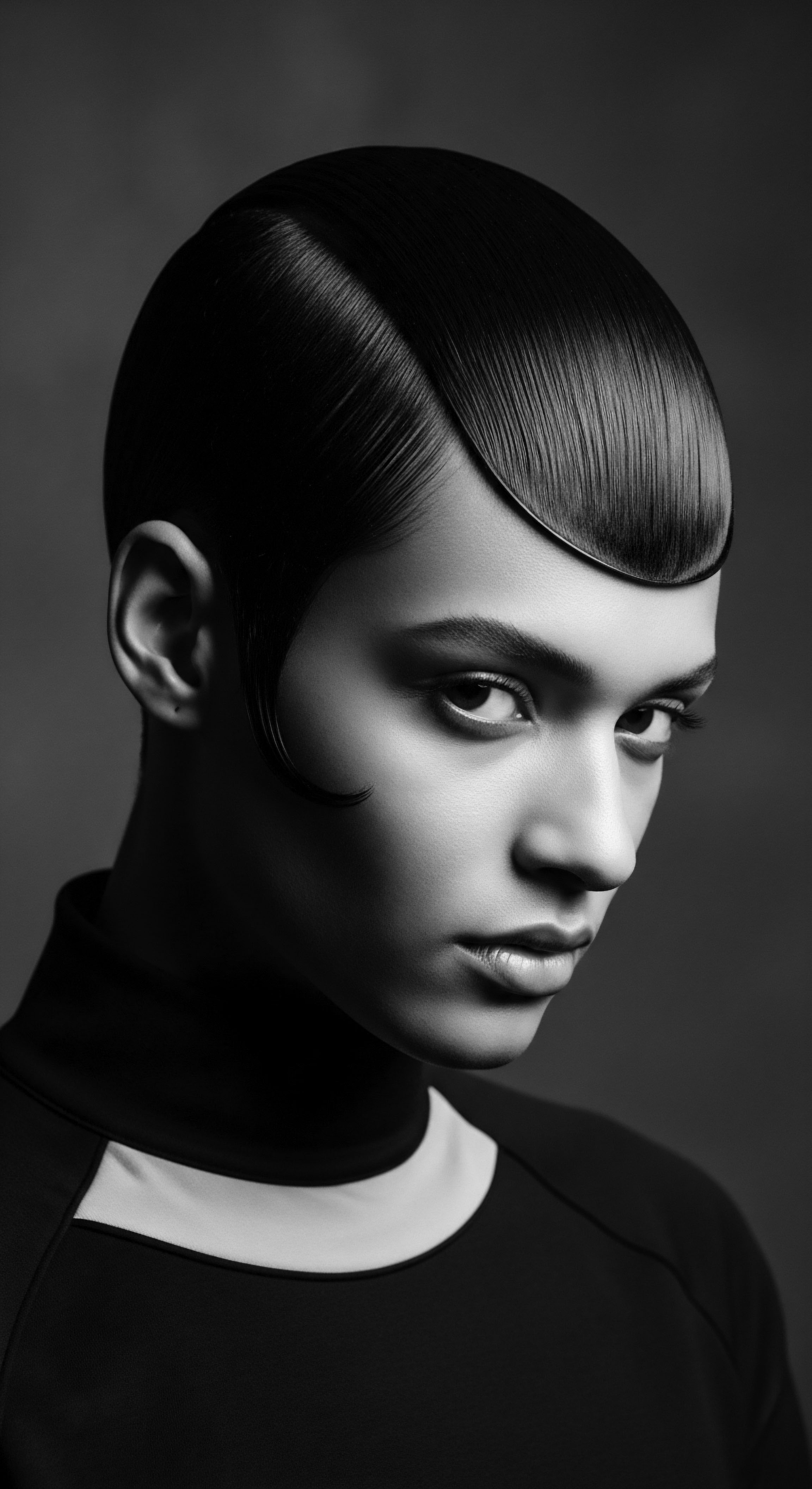
The Nighttime Sanctuary ❉ Bonnet Wisdom and Ancient Practices
The practice of covering hair at night, now widely recognized for its protective benefits, has a deep historical lineage within Black and mixed-race communities. The hair bonnet, in its various forms, has served as a crucial tool for preserving hairstyles, reducing tangles, and minimizing friction damage while sleeping. (Hype Hair, 2023).
This tradition became particularly pronounced during slavery, where headwraps and bonnets shielded hair from harsh conditions and symbolized resilience. (Hype Hair, 2023).
From a scientific viewpoint, cotton pillowcases absorb moisture, stripping hair of its natural oils and applied products, leading to dryness and breakage. (The Zoe Report, 2024). Silk or satin bonnets, on the other hand, create a smoother surface, reducing friction and allowing hair to retain its moisture. This minimizes mechanical stress on the delicate hair cuticle, preventing frizz, tangles, and breakage that can compromise length retention.
(The Zoe Report, 2024). This simple yet profound nightly ritual, rooted in historical necessity and passed down through generations, directly aligns with modern understanding of hair fiber mechanics and moisture preservation.
- Friction Reduction ❉ Silk/satin bonnets create a smooth surface, reducing rubbing against coarse fabrics like cotton, which can roughen the cuticle.
- Moisture Retention ❉ The non-absorbent nature of silk/satin helps hair retain its natural sebum and applied moisturizers, combating dryness.
- Style Preservation ❉ Minimizing movement and friction helps preserve braids, twists, and other styles, extending their longevity and reducing the need for daily manipulation.
The idea of a “nightcap” or “sleeping cap” has a long history, not exclusive to Black communities, but its protective function for textured hair against dryness and mechanical stress holds particular significance. (Sew Historically, 2015).

Ingredient Intelligence ❉ Historical Remedies, Modern Validation
The historical use of specific natural ingredients for textured hair care, often rooted in ethnobotanical knowledge, reveals an intuitive understanding of their properties. Beyond shea butter, numerous plant-based ingredients were regularly applied:
- Aloe Vera ❉ Used traditionally for its soothing properties on the scalp and as a conditioning agent. Modern science confirms its anti-inflammatory and moisturizing benefits. (Hair Care Practices, 2025).
- Coconut Oil ❉ A staple in many ancestral hair care traditions, recognized for its deep conditioning. Research supports its ability to penetrate the hair shaft, reducing protein loss and providing significant moisture. (Ayurvedic Tradition, 2023).
- Marula Oil ❉ Utilized by communities like the Himba, known for its moisturizing qualities. Its fatty acid profile contributes to hair hydration. (Pure Love Artisan Sk, 2024).
The concept of hair porosity, describing the hair’s ability to absorb and retain moisture, has recently gained prominence in hair science. (NYSCC, 2020). Interestingly, ancient systems of medicine, like Ayurveda, a traditional Indian system, have long integrated treatments and oil massages using specific herbs and oils (such as coconut, brahmi, and amla oil) to balance hair porosity.
(Ayurvedic Tradition, 2023). This ancient wisdom implicitly addressed hair’s varying capacity for moisture, a concept now meticulously defined by scientific instruments.
Moreover, studies show that environmental pollution can degrade hair proteins, affecting strength and shine, and increasing brittleness. (MDPI, 2022). Ancestral remedies often contained antioxidant compounds, like those found in shea butter, which modern research suggests can prevent protein carbonylation and protect hair fibers from environmental stressors.
(MDPI, 2022). This convergence of traditional knowledge and scientific discovery validates the profound foresight embedded within textured hair heritage.
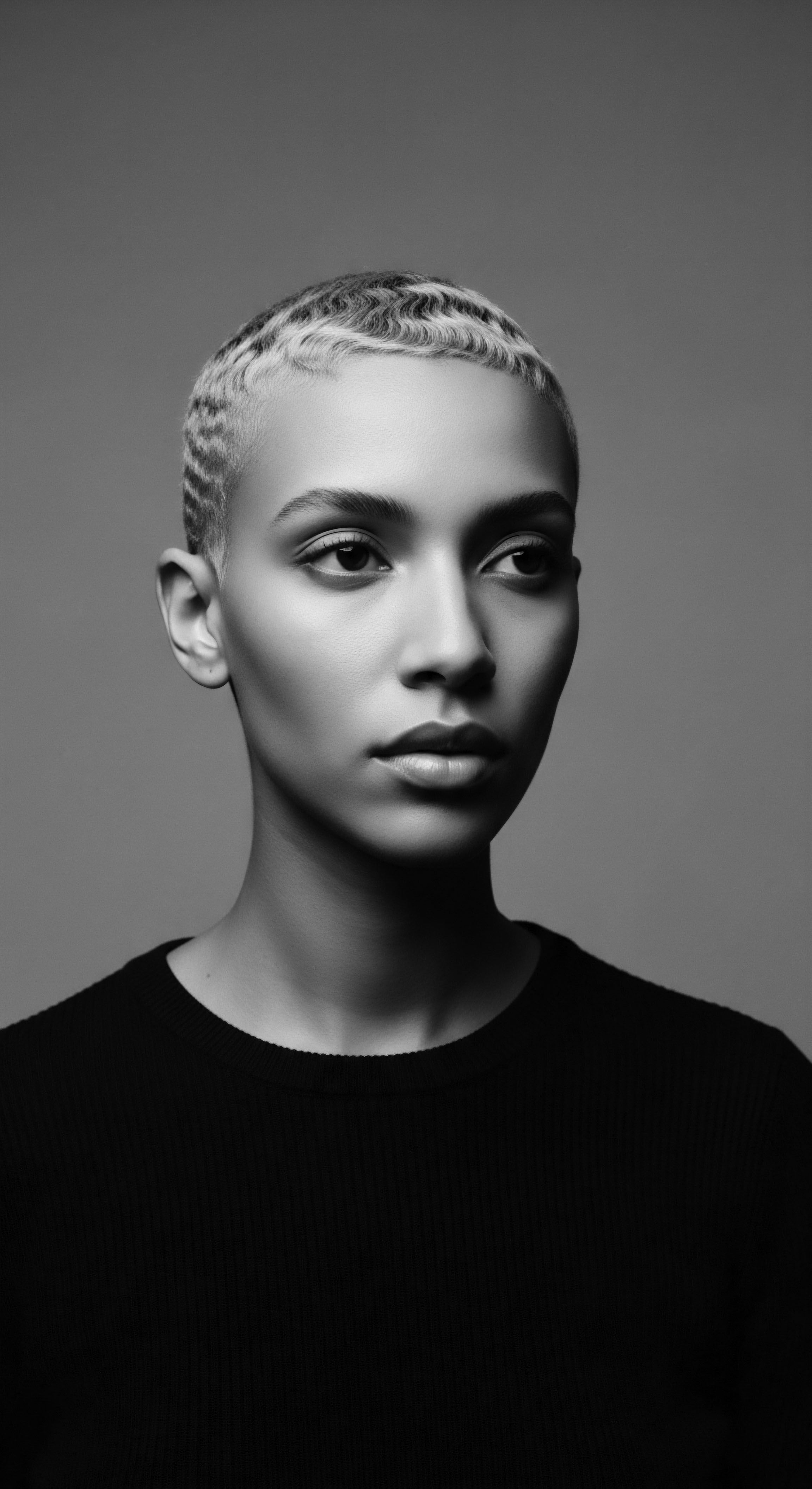
Reflection
The journey through the historical landscape of textured hair protection, viewed through the discerning lens of modern science, reveals a profound and continuous wisdom. It becomes evident that the intuitive practices of our ancestors were not simply cultural quirks but meticulously developed systems of care, born from intimate observation and deep connection to the natural world. The question, “Can modern science validate historical textured hair protection?” receives an resounding affirmation, not as a dismissal of ancient knowledge in favor of new, but as a harmonious dialogue where contemporary understanding clarifies and celebrates the genius of the past.
This is the heart of Roothea’s ‘Soul of a Strand’ ethos ❉ recognizing each coil, each twist, as a living archive, holding the echoes of generations. The very structural characteristics of textured hair – its unique follicular shape leading to dryness and breakage points – were implicitly understood by those who braided, oiled, and adorned it with protective intent. The use of natural butters, the intricate geometry of protective styles, and the simple yet powerful act of covering hair at night all speak to a sophisticated grasp of hair biology and environmental interaction, long before scientific terms articulated them.
The resilience of textured hair heritage is not merely a story of survival, but one of thriving. Despite centuries of systemic attempts to dismantle cultural ties to hair, the practices persisted, often transforming into acts of quiet rebellion and powerful self-affirmation. The Afro comb, once a practical tool, became a political emblem.
The hair bonnet, a shield against harsh labor, evolved into a symbol of self-care and cultural pride. These are not relics to be admired from a distance; they are living traditions, their efficacy now underscored by the precise language of chemistry and physics.
The enduring value of textured hair protection lies in its holistic approach. It reminds us that true care extends beyond product application; it encompasses community, identity, and a deep respect for the legacy carried within each strand. As we continue to study and comprehend the complexities of textured hair, we find ourselves, time and again, returning to the profound insights preserved by our ancestors. Their wisdom stands as a luminous guide, illuminating pathways for future generations to cherish and honor their hair, connecting them to a past rich with ingenuity and a future ripe with possibility.
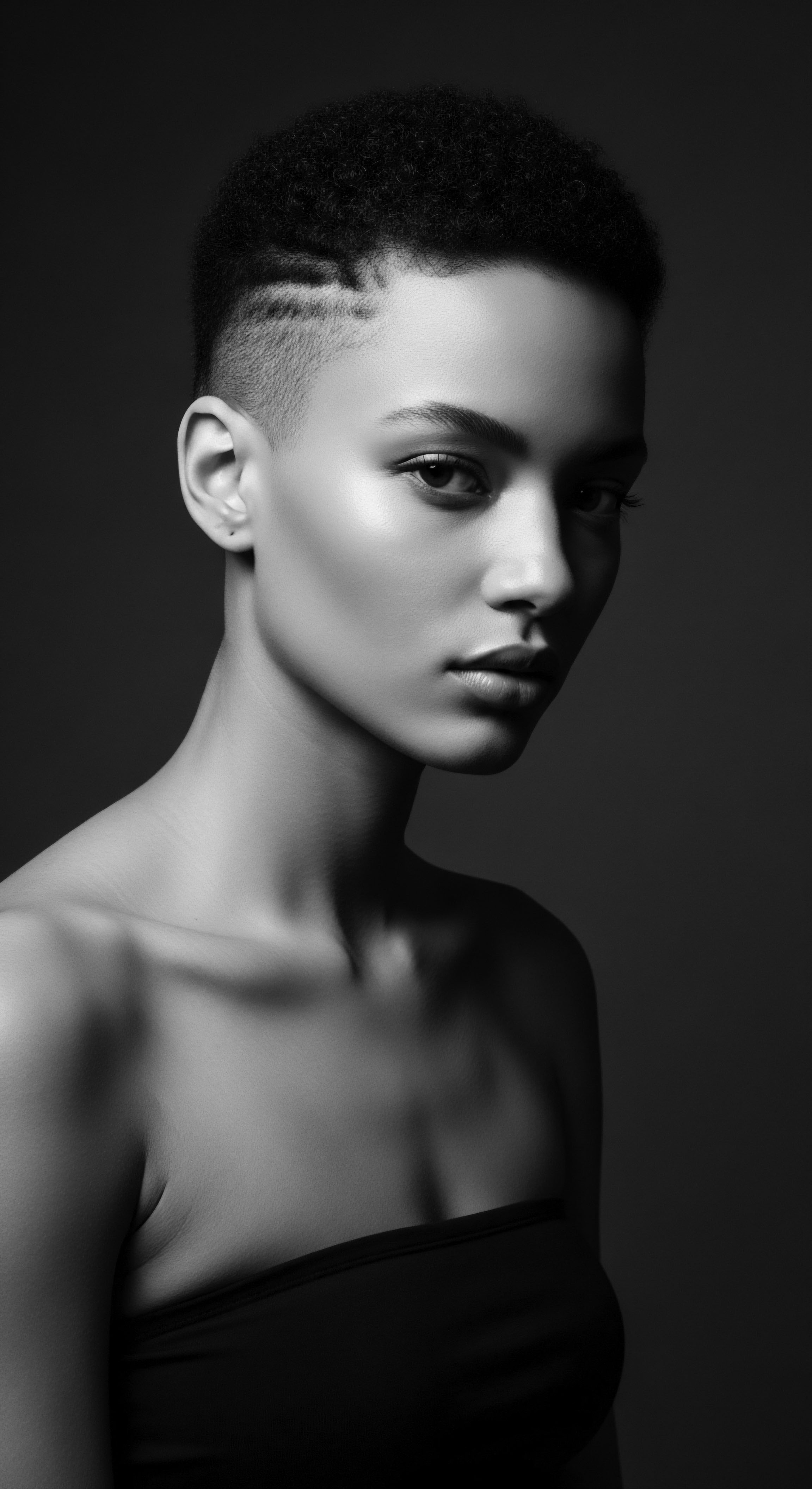
References
- Afriklens. (2024, November 1). African Hairstyles ❉ Cultural Significance and Legacy.
- Ayurvedic Tradition. (2023, June 16). Understanding Porosity ❉ The Key to Healthy Hair. FullyVital.
- Byrd, A. D. & Tharps, L. D. (2014). Hair Story ❉ Untangling the Roots of Black Hair in America. St. Martin’s Griffin. (as cited in Wikipedia, African-American hair, 2024)
- Carra. (2021, March 26). The Science of Textured Hair.
- Davines. (2023, November 29). Mastering High Porosity Hair Care ❉ The Key to Hydrated, Healthy Locks.
- Davines. (2023). Protect Your Tresses ❉ The Importance of Protective Hairstyles.
- Dr. Axe. (2022, March 7). Shea Butter for Hair Improves Hydration and Texture.
- Dr.UGro Gashee. (2020, March 12). Red Ochre as a Skin and Hair Sunblock an Old Himba Discovery.
- Hairdressing Live. (2024, September 30). The Science of Hair ❉ Understanding hair types & textures.
- Healthline. (2018, March 13). Shea Butter for Hair ❉ Raw, Hair Growth, and Natural Hair.
- Himba. (2023, March 16). Himba woman from Namibia. Reddit.
- Hype Hair. (2023, June 26). Unveiling the History of the Hair Bonnet for Black Women.
- Livara Natural Organics. (2023, February 7). Black History Month ❉ The Rich History of Our African Hair.
- L’Oréal Paris. (2024). Protective Hairstyles For Natural Hair.
- MDPI. (2022, September 26). Protein Carbonylation as a Reliable Read-Out of Urban Pollution Damage/Protection of Hair Fibers.
- Noma Sana. (2025, March 28). The Science Behind Textured Hair ❉ Why It Needs Different Care.
- NYSCC. (2020, November 11). An Overview on Hair Porosity.
- NYSCC. (2021, July 12). Impact of Environmental Stressors on Hair.
- Pure Love Artisan Sk. (2024, May 24). The Age-Old Beauty Rituals of the Himba Tribe.
- Sew Historically. (2015, July 27). Night-Time Hair Routine – Victorian And Edwardian Hair Care.
- The Zoe Report. (2024, February 26). The Silk Bonnet’s History Is Rooted In Black Beauty Rituals.
- Whiz Laboratories Skincare. (2023, December 18). Protective Haircare Benefits and Hair Style Maintenance Tips.
- Wikipedia. (2022, December 1). Otjize.
- Wikipedia. (2024, February 24). African-American hair.
- Wikipedia. (2024, May 29). Protective hairstyle.
